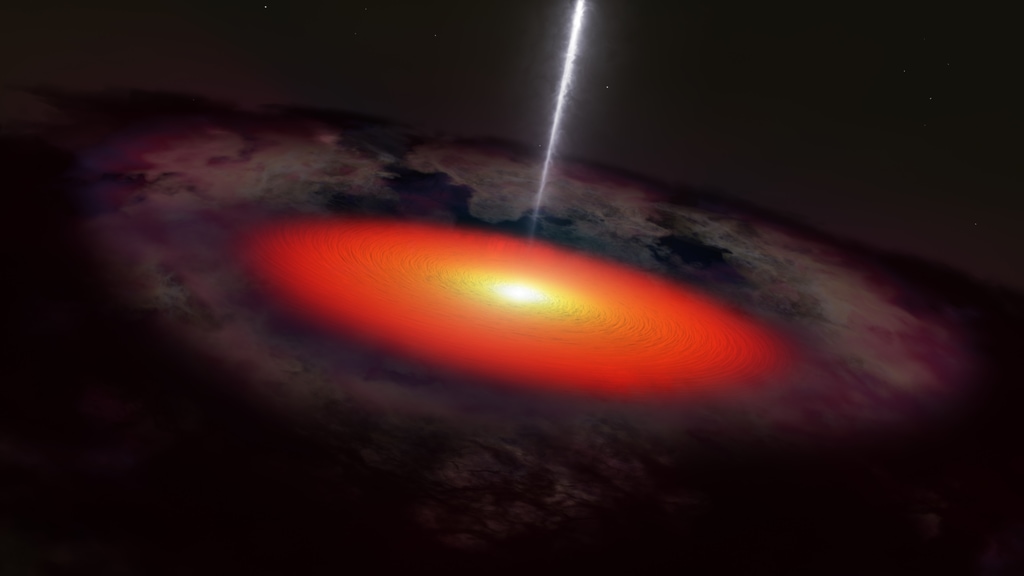NASA Celebrates Black Hole Week 2023: NASA is celebrating black hole week from May 1-5, 2023. Black holes are considered as the most mysterious cosmic objects in the universe. Many scientists and space organisations are studying black holes and have still not fully understood their phenomena. Black holes are not holes but huge concentrations of matter packed into very tiny spaces. A black hole’s surface is called the event horizon. This surface is not like the surface of the Earth or the sun. The event horizon is a boundary that contains all the matter that makes up the black hole. As the black hole is so dense, the gravity just beneath its surface, the event horizon, becomes strong enough that nothing, not even light, can escape through it.
Is your type tall (maybe even "supermassive"), dark, and mysterious? Celebrate #BlackHoleWeek with us!
— NASA (@NASA) May 1, 2023
Learn about these cosmic objects, share science updates, visualizations, and sonifications. Follow @NASAUniverse and get pulled in: https://t.co/6fYorGK8rd pic.twitter.com/rS1vDyO1Eq
NASA Black Hole Week 2023: May 1-5, 2023

Image Source: NASA
As per the data shared by NASA, there are likely tens of millions of black holes dotted around the Milky Way. However, so far we have only identified a few dozen. The ones that have been discovered are typically paired with a star interacting in a way that reveals the black hole’s presence in the universe. So, NASA is going to share the images of hidden black holes this whole week. Black Hole Week was established in 2019 by NASA to study black holes in more depth on social media.
Welcome to #BlackHoleWeek!
— NASA Exoplanets (@NASAExoplanets) May 1, 2023
Most galaxies, like our Milky Way, have black holes at their centers. This computer-simulated image shows what that might look like. In the center is the black hole’s event horizon, where no light can escape. https://t.co/mayS4A7WiA pic.twitter.com/yKmPvuLB7w
Black Hole Facts
Here are some interesting facts about the black holes:
| Features | Facts |
| Closest | The nearest known black hole, called 1A 06200-00, is 3,000 light-years away. |
| Farthest | The most distant black hole detected, at the center of a galaxy called QSO J0313-1806, is around 13 billion light-years away. |
| Biggest | The most massive black hole observed, TON 618, tips the scales at 66 billion times the Sun’s mass. |
| Smallest | The lightest-known black hole is only 3.8 times the Sun’s mass. It’s paired up with a star. |
| Spaghettification | A real term that describes what happens when matter gets too close to a black hole. It’s squeezed horizontally and stretched vertically, resembling a noodle. |
| Spin | All black holes spin. The fastest-known – named GRS 1915+105 – clocks in at over 1,000 rotations per second. |
| Particle Accelerators | Monster black holes at the centers of galaxies can launch particles to near light speed. |
| Gravity’s the same | If you replaced the Sun with a black hole of the same mass, the solar system would get a lot colder, but the planets would stay in their orbits. |
| Star Booms | This type of black hole is born when massive stars run out of fuel and explode in supernovae. |
| Not so rare | Most Milky Way-sized galaxies have monster black holes at their centers. Our is called Sagittarius A* (pronounced ey-star), and it’s 4 million times the Sun’s mass. |
How to Find a Black Hole?
As black holes do not emit or reflect light, they are invisible to telescopes. Scientists detect and study black holes primarily based on how they affect their surroundings. NASA shared the four ways to detect a black hole:
1. Black holes can be surrounded by rings of gas and dust, called accretion disks, that emit light across many wavelengths, including X-rays.
2. A supermassive black hole’s intense gravity can cause stars to orbit around it in a particular way.
3. When massive objects accelerate through space, they create ripples in the fabric of space-time called gravitational waves. Scientists can detect some of these by the ripples’ effect on detectors.
4. Massive objects like black holes can bend and distort light from more distant objects. This effect, called gravitational lensing, can be used to find isolated black holes that are otherwise invisible.
It’s #BlackHoleWeek, a special week where we celebrate black holes! We could talk about black holes every day, but we still have to cover the rest of the universe. So this is their time to shine … figuratively, of course, because black holes don’t emit light themselves. pic.twitter.com/lR9fn9eO4D
— NASA Universe (@NASAUniverse) May 1, 2023
It is a fact that there is much we don’t know about black holes, for example, what matter looks like inside their event horizons. However, scientists have discovered a lot about black holes over the past few decades. So, if you have an interest in black hole events then NASA’s Black Hole Week is meant for you only!
Comments
All Comments (0)
Join the conversation